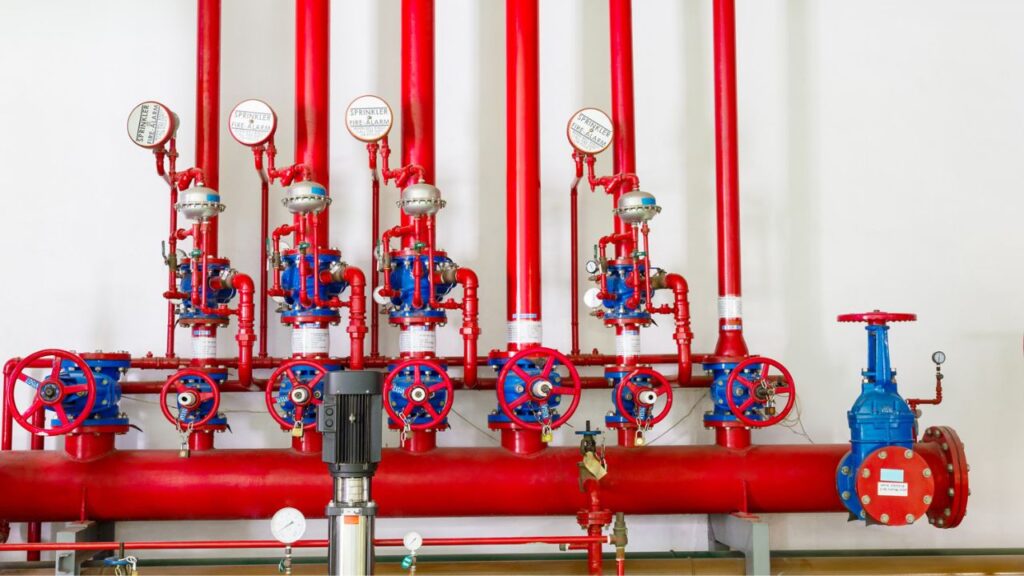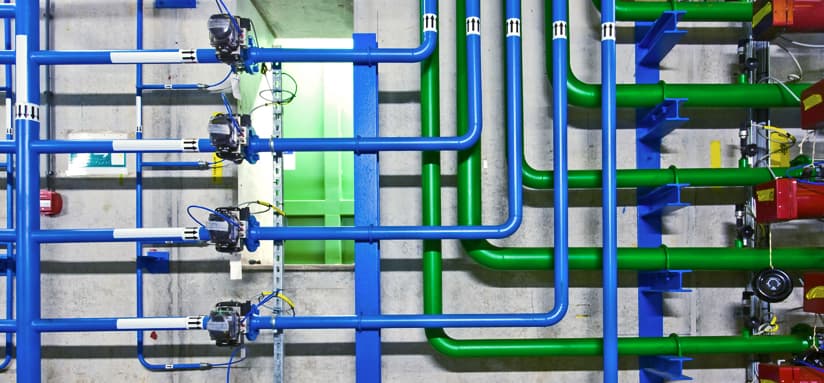A Detailed Look at Your House's Plumbing System Anatomy
A Detailed Look at Your House's Plumbing System Anatomy
Blog Article
Everybody may have their private conception involving Anatomy of a House: Understanding the Components.

Understanding just how your home's plumbing system works is necessary for each home owner. From delivering tidy water for drinking, cooking, and showering to securely removing wastewater, a well-maintained plumbing system is crucial for your family's wellness and comfort. In this thorough guide, we'll explore the complex network that composes your home's plumbing and deal suggestions on maintenance, upgrades, and handling typical problems.
Intro
Your home's plumbing system is greater than just a network of pipelines; it's a complex system that ensures you have accessibility to clean water and effective wastewater elimination. Knowing its parts and just how they work together can help you avoid costly repair services and make certain everything runs smoothly.
Fundamental Elements of a Pipes System
Pipes and Tubes
At the heart of your pipes system are the pipes and tubing that lug water throughout your home. These can be made of different products such as copper, PVC, or PEX, each with its benefits in terms of durability and cost-effectiveness.
Fixtures: Sinks, Toilets, Showers, etc.
Components like sinks, bathrooms, showers, and tubs are where water is used in your home. Comprehending how these fixtures link to the pipes system aids in diagnosing issues and preparing upgrades.
Shutoffs and Shut-off Factors
Valves control the flow of water in your pipes system. Shut-off shutoffs are crucial during emergencies or when you require to make repair work, enabling you to separate parts of the system without interfering with water circulation to the whole residence.
Supply Of Water System
Main Water Line
The main water line links your home to the local water or an exclusive well. It's where water enters your home and is distributed to different fixtures.
Water Meter and Stress Regulatory Authority
The water meter actions your water use, while a stress regulatory authority guarantees that water flows at a safe pressure throughout your home's plumbing system, avoiding damage to pipes and components.
Cold Water vs. Warm water Lines
Understanding the distinction between cold water lines, which supply water directly from the main, and hot water lines, which lug warmed water from the hot water heater, aids in repairing and preparing for upgrades.
Water drainage System
Drain Pipes Piping and Traps
Drain pipelines bring wastewater away from sinks, showers, and toilets to the sewer or septic tank. Catches stop sewer gases from entering your home and also trap debris that can create obstructions.
Air flow Pipes
Ventilation pipes permit air right into the drain system, stopping suction that might slow drainage and create catches to vacant. Appropriate ventilation is essential for maintaining the stability of your pipes system.
Value of Correct Water Drainage
Making sure appropriate drain avoids backups and water damage. Routinely cleaning drains pipes and keeping catches can protect against expensive repair work and prolong the life of your plumbing system.
Water Heating System
Sorts Of Hot Water Heater
Hot water heater can be tankless or standard tank-style. Tankless heating units heat water on demand, while containers save heated water for immediate usage.
Updating Your Pipes System
Reasons for Updating
Upgrading to water-efficient components or changing old pipelines can enhance water quality, decrease water bills, and increase the value of your home.
Modern Pipes Technologies and Their Advantages
Explore innovations like clever leakage detectors, water-saving commodes, and energy-efficient hot water heater that can save cash and decrease ecological impact.
Price Considerations and ROI
Compute the upfront expenses versus lasting cost savings when considering plumbing upgrades. Many upgrades pay for themselves via decreased utility expenses and less repair work.
Just How Water Heaters Connect to the Pipes System
Understanding exactly how water heaters link to both the cold water supply and warm water circulation lines helps in detecting concerns like insufficient warm water or leaks.
Maintenance Tips for Water Heaters
Regularly purging your hot water heater to get rid of sediment, checking the temperature level settings, and examining for leakages can expand its life-span and boost energy effectiveness.
Common Pipes Issues
Leakages and Their Causes
Leakages can occur as a result of aging pipelines, loose installations, or high water pressure. Resolving leaks without delay prevents water damages and mold and mildew growth.
Obstructions and Blockages
Clogs in drains and commodes are typically brought on by flushing non-flushable items or an accumulation of oil and hair. Using drainpipe displays and being mindful of what decreases your drains pipes can avoid obstructions.
Indicators of Plumbing Issues to Expect
Low water pressure, slow-moving drains, foul odors, or unusually high water expenses are indications of possible plumbing issues that must be addressed quickly.
Pipes Maintenance Tips
Regular Evaluations and Checks
Arrange yearly pipes examinations to capture concerns early. Look for signs of leakages, deterioration, or mineral accumulation in taps and showerheads.
Do It Yourself Upkeep Tasks
Basic jobs like cleansing tap aerators, looking for commode leakages making use of color tablet computers, or shielding subjected pipelines in chilly environments can prevent major plumbing problems.
When to Call a Professional Plumbing
Know when a plumbing issue requires professional proficiency. Trying intricate fixings without correct expertise can result in even more damages and greater repair work prices.
Tips for Minimizing Water Usage
Easy routines like taking care of leaks without delay, taking shorter showers, and running full loads of washing and recipes can save water and lower your utility bills.
Eco-Friendly Plumbing Options
Consider lasting pipes materials like bamboo for floor covering, which is durable and green, or recycled glass for kitchen counters.
Emergency situation Preparedness
Steps to Take Throughout a Plumbing Emergency
Know where your shut-off shutoffs lie and just how to switch off the water system in case of a burst pipeline or major leak.
Relevance of Having Emergency Calls Helpful
Maintain call info for local plumbing professionals or emergency solutions easily available for fast reaction during a plumbing situation.
Environmental Influence and Preservation
Water-Saving Fixtures and Devices
Setting up low-flow faucets, showerheads, and toilets can dramatically decrease water use without compromising performance.
Do It Yourself Emergency Fixes (When Relevant).
Momentary fixes like making use of duct tape to spot a leaking pipeline or placing a pail under a leaking tap can minimize damages until an expert plumber gets here.
Verdict.
Recognizing the makeup of your home's plumbing system encourages you to maintain it effectively, conserving money and time on fixings. By following normal maintenance regimens and staying notified regarding modern plumbing modern technologies, you can guarantee your pipes system runs successfully for years to come.
HOW YOUR PLUMBING SYSTEM WORKS
Which Pipes Do What?
Blue lines = fresh water supply entering the building Red lines = hot water supply entering the building Grey lines = pipes carrying waste away from the building and venting pipes carrying gases away from the building (through the roof) YOUR MAIN PLUMBING SYSTEMS
There are two main plumbing systems that support your home s basic plumbing needs one that brings clean water into your home, and one that sends dirty water away from your home. Connected to the toilet, bath, shower, and other faucets in your home, these two systems keep your water flowing in the right directions.
ACCESSING FRESH WATER
Fresh and clean water is brought into your home through the main water supply line . Filtered through one pipe, this water is pressured to flow into the various fixtures in your home at any given time.
This water can be sourced from a well located on your property, a pond or river (mostly cottages), or, as in most cases, from the city s municipal water treatment centre. However, it is important to note that water that is untreated, such as the water siphoned from ponds or rivers, may not be safe to drink. Personal water supplies always need to be treated for hardness and contaminants before consumed.
MUNICIPAL WATER SUPPLIES
Improve taste and odour Remove sediment Eliminate hardness Reduce chlorine COLD WATER SUPPLY VS. HOT WATER SUPPLY
Cold water flows into your home or building through the service line, which then distributes hot or cold water to your fixtures. This line is most commonly run through a central column that runs floor to floor. Hot water runs in short and straight pipes as the longer the pipeline, the more heat that will be lost in the transfer. Having shorter pipes also allows residents to access hot water more quickly.
WASTE WATER SYSTEM
Your wastewater system is divided into two parts pipes that send wastewater away from your home and venting pipes that send sewer gas away from your home. Sewage water travels through pipes that flush the water and waste towards local sewers that are operated and managed by your city or town. Most sewer systems rely on gravity to move the wastewater to where it needs to go.
The further away from your toilet or sink, the larger wastewater pipes become. This allows for waste to be disposed of from various parts of your home or business at once without pipe blockages. The angle and flow of these pipes are also essential for keeping your waste pipes clear of build up.
https://harrisplumbing.ca/how-your-home-plumbing-system-works/

I found that blog post on Understanding Your Home's Plumbing Anatomy when doing a lookup on the internet. Are you aware of somebody who is excited by the topic? Feel free to share it. Thank you for taking the time to read it.
Click Here Report this page